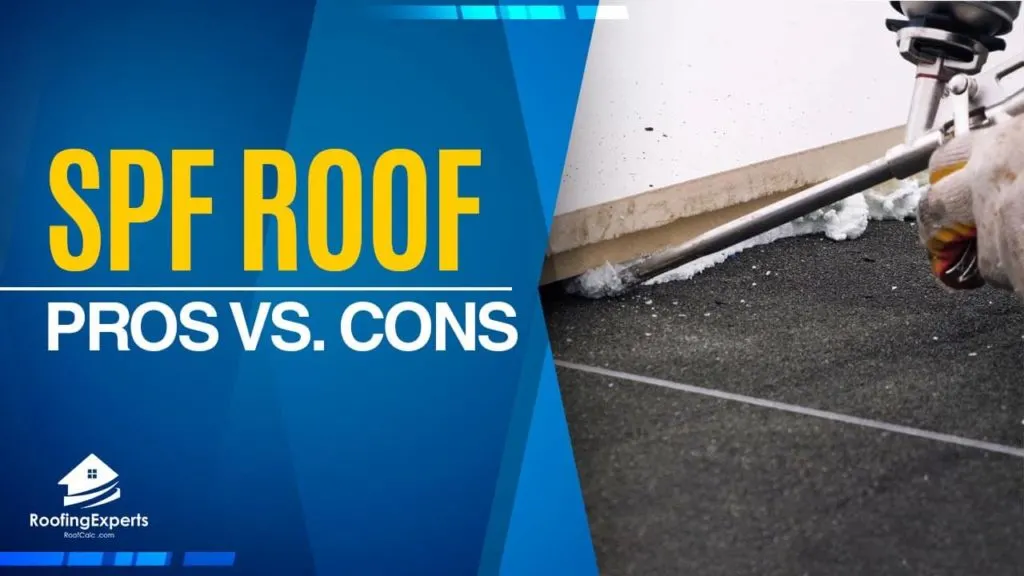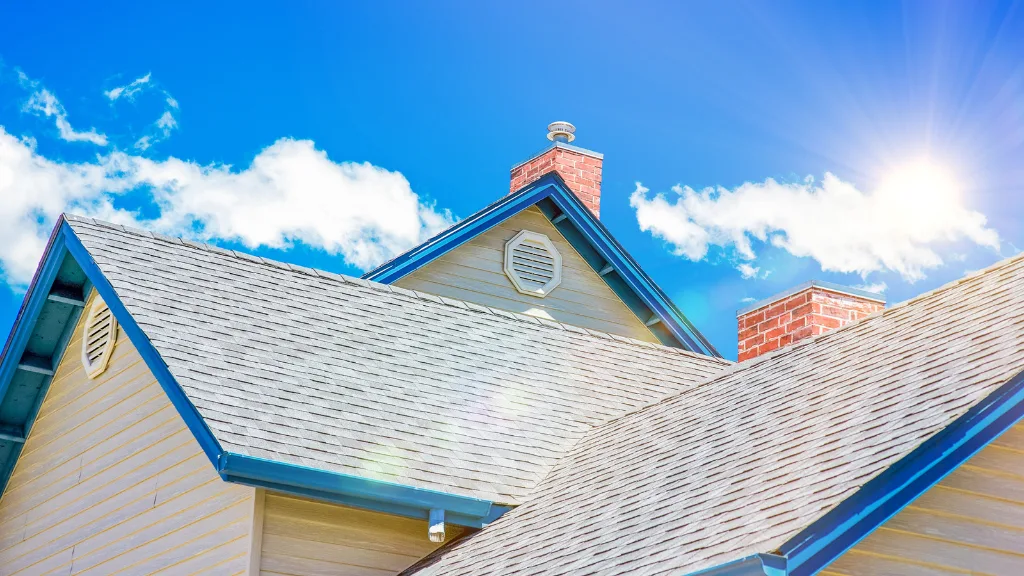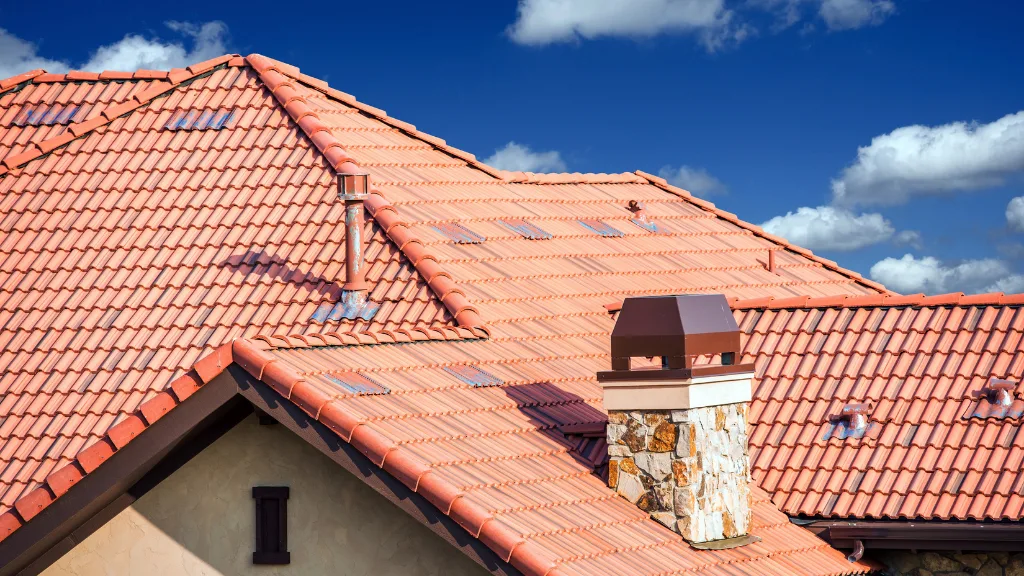
In today’s commercial buildings’ industry, there has been a particularly growing desire to provide owners with long-lasting and durable roofing systems that have high energy performance combined with low maintenance costs.
With that, people started getting interested in SPF roofing systems. This type of roofing system has been around for over 40 years, despite most people and roofing professionals not having enough knowledge on how to specify, install, or maintain these systems.
In this article, we will talk about SPF roofs and what their pros and cons are, as well as help you find out whether a spray foam roof is the right type of roof for you.
What Is SPF?
SPF, or spray polyurethane foam roofing is made up of an application of precisely designed foam covered with an elastomeric coating (usually acrylic, silicone, or polyurethane) or aggregated covering to protect the foam from the sun’s harsh ultraviolet rays.
Using specialized equipment to mix two liquid components at the spray gun that applies SPF to a prepared substrate, the liquid forms a rigid foam plastic that bonds it to the surface in which it is sprayed.
SPF is water-resistant because of its closed-cell structure. To prevent ultraviolet-induced surface damage, it must be coated by elastomeric coatings or other coverings (such as aggregate).
Other uses for such coverings include preventing moisture vapor passage, improving the system’s aesthetics, boosting the system’s impact and abrasion resistance, and meeting flammability and code requirements.
How Long Can I Expect My SPF Roof To Last?
SPF roofing systems should be evaluated twice a year and after any occurrences that could result in mechanical damage, such as hail storms, tornadoes, and hurricanes. Small cracks, gouges, or punctures (less than 4 inches in diameter) can be fixed with an elastomeric sealer compatible with the SPF system. Remove the damaged foam and reapply extra SPF and coating to cure more serious damage.
To extend the life of SPF roofing systems, they are routinely recoated on a regular schedule. According to Dupuis’s research, the average time between recoating cycles for SPF roofing systems is presently 15 years.

Advantages Of SPF Roofing Systems
Easy installation process
With your new SPF roof, the ease of installation can save you time and money. The application of the foam and coating is quick, and there is normally no disruption to the facility’s everyday operations. Spraying a liquid onto an existing roof and letting it expand into foam is how SPF roofs are installed.
Because of this procedure, the foam may conform to any roof shape or kind, including irregularly shaped roofs.
The SPF roof can be put directly over asphalt, shingles, concrete, metal, and wood after cleaning the old roof.
Energy-efficient
SPF roofing provides the best thermal, air, and moisture barriers, resulting in the highest R-value per inch, which implies the material insulates the building better.
The polyurethane foam keeps heat out in the summer and in the winter, saving facility owners money on energy bills. The silicone top layer protects the foam from UV rays and decreases heat absorption (emissivity).
Easy maintenance
Once installed, an SPF roof requires very little preventative maintenance and repair. Your SPF roof can survive for over 50 years if properly maintained.
SPF roofs should be evaluated twice a year, once in the spring and once in the fall. Following any occurrence that may have resulted in system damage, additional examinations are recommended.
If a silicone recoating is required, the original materials are not torn off; instead, the new coat is applied on top of the existing system.
Waterproof And Seamless
The principal sources of leaks in roof systems are seams and penetrations; SPF reduces this susceptibility. The SPF combination can fill gaps, seams, and fissures in the existing roof and substrate because it is applied as a liquid.
The use of polyurethane foam allows the contractor to level the roof and reduce the likelihood of ponding water. The foam material may expand and contract with the building as the temperature changes outside, lowering the risk of cracks and splits.
Renewable And Sustainable Roofing
During their lifetime, SPF roofs generate minimal to no trash. In most situations, the original roof is only lightly stripped, and the SPF roof is put on top, reducing the need for costly roof tear-offs and trash.
Environmentally friendly materials are also employed in SPF roofing systems:
- There is no potential for ozone depletion (ODP)
- Emissions of Volatile Organic Compounds are low (VOCs)
- Chlorofluorocarbons are not present (CFCS)
- Extremely Low Global Warming Potential (GWP)

Disadvantages Of SPF Roofing Systems
Not every contractor is created equally
The application of spray foam is a process that must be done right from the start. The contractor must be exact in his application and have a thorough grasp of the chemicals he is employing.
Installing an SPF roofing system does not require a huge team, but it does necessitate a high level of technical knowledge and experience.
The Spray Polyurethane Foam Alliance (SPFA) provides an ISO-17024 compliant certification scheme with different levels, which requires the contractor to pass an exam and meet the certification standards.
If the roofing system is installed poorly, it can have a negative impact on the roof’s and underlying substrate’s longevity.
Limited installation time frame
SPF can only be applied in certain weather conditions. When there is ice, frost, surface moisture, or obvious wetness on the current roof, an SPF roofing system cannot be installed.
While the installation does not interfere with the building’s everyday operations, the weather requirements may leave just a small window of opportunity.
Environmental Conditions
SPF roofing systems, like most roofing systems, need to be placed in the right environment. When the substrate temperature is below the manufacturer’s specifications or the humidity is within 5 degrees of dewpoint, the SPF applicator should not proceed.
Furthermore, when there is ice, frost, surface wetness, or evident dampness on the surface to be covered, SPF and the protective coating should not be applied. If wind conditions threaten the foam’s quality or cause overspray issues, barriers may be required.
Because applicator knowledge and experience are critical to the effective installation of an SPF roof, it’s crucial to look into a contractor’s historical performance before hiring them. Fortunately, there are high-quality foam contractors in every region of the United States.
Overspray Potential
SPF is sprayed with a spray and is quite light. While overspray outside of the application zone is rarely a health threat, it can adhere to a variety of surfaces from a vast distance. Before beginning a project, building owners and contractors should have an overspray prevention plan in place.
Fumes
While curing, some coatings might release unpleasant scents. Curing can happen rapidly or take a long time. If tenants are present, air-handling units should be switched off and covered before installing an SPF roofing system. They should be kept covered until the SPF has been applied and the coating has had time to set.
Cost
The cost of SPF roofing systems varies greatly based on the required foam thickness, the type and thickness of the coating or covering the degree of substrate preparation, contractor availability in a given region, and other criteria.
There are high-end and low-end SPF roofing systems, just as there are with other roofing systems. Michelsen Technologies conducted a life-cycle analysis for SPF roofing systems in five US climate zones in 2004.
Over the course of a 30-year period, the typical SPF roofing system in those areas costs between 15% and 50% less to build and maintain than conventional membrane systems, according to the study. The study calculated expenses based on recoat schedules of six, ten, and fifteen years.
Repairs And More Maintenance Needed
SPF does not have the same level of resistance to punctures or damage as UV protection. If your SPF roof is damaged, you must hire an SPF contractor to restore it. Because ordinary roofing repair materials do not cling to the silicone coating, the repair must be accomplished with silicone.
Spray Polyurethane Foam Roofing Systems are quickly becoming the preferred roofing material for commercial, industrial, and manufacturing buildings seeking a long-term, cost-effective solution.
Our goal at West Roofing Systems is to provide you with a long-lasting, resilient roof that will safeguard your facility. This includes collaborating with our award-winning team to select the best roofing solutions to fit your requirements.
Key Takeaway
It is necessary to have both knowledge and experience when it comes to SPF roofing systems.
Large SPF roofing systems can be installed by a small team, but they demand a high level of technical knowledge and experience. There were fewer trained contractors and less training offered a few years ago.
Interlaminar blistering of the SPF layers is common when SPF roofing systems are placed poorly. Attempting to lengthen the application window, incorrect substrate preparation, or equipment issues are the most common causes of foam blisters.
